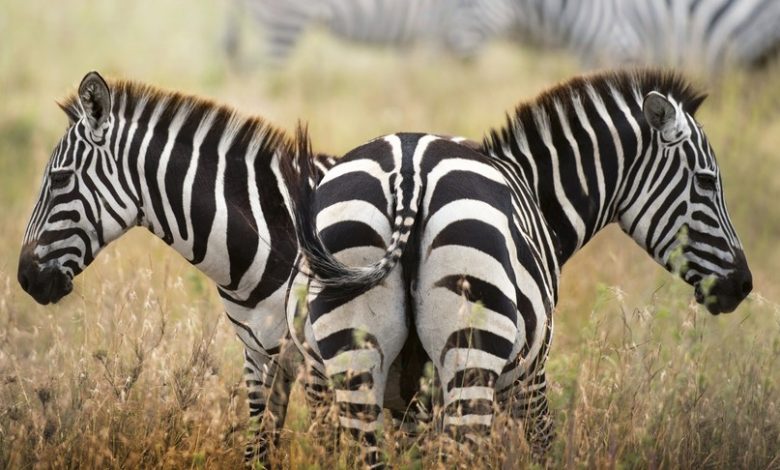In Africa, zebras are found with polka dots and a golden coat

AGI – Zebra Polka Dot is no longer just the title of a children’s song, but a reality in Africa. Due to a number of genetic mutations, and this is mainly due to inbreeding, In Africa, really exotic zebras have been recognized and studied: with polka dots, but also with gold plating.
These are not harmless mutations, but they are dangerous from an evolutionary point of view. These, in short, are the conclusions of a study conducted by a group of researchers from the University of California, Los Angeles. The results have been published in Molecular Ecology and dedicated to an article in National Geographic.
In the study, researchers performed DNA tests on African zebras to understand the causes of abnormalities in the coatings of many samples. “The fragmentation of the habitat by humans – Brenda Larison of the University of California, Los Angeles – has led to an increase in inbreeding, so These distinctive mutations could highlight the future danger to the species“.
Isolated groups were more likely to produce abnormally striped zebras, suggesting that these genetic mutations are due to inbreeding and habitat fragmentation. https://t.co/3XnyN6Sd55
National Geographic (NatGeo) January 23, 2021
The team analyzed the DNA of 140 samples, seven of them with atypical shells, from nine national parks in Africa. “Lack of genetic diversity can lead to genetic defects – disease and sterility. Zebras are not currently an endangered species, but” Its population has seen a 25 percent decrease in unit numbers since 2002. Atypical patterns were observed during this period, but we did not know for sure what these characteristics could be attributed to.
According to National Geographic, about 500,000 zebras have been affected by habitat fragmentation caused by human development, forcing animals into smaller areas and preventing them from migrating with different herds, a process essential for genetic diversity.
Even if zebras are not currently threatened – the world notes – These genetic problems could determine a future risk. The famous black stripes of the zebra evolved to facilitate animal camouflage on the plains. The distinctive manta rays are more pronounced for predators. ”Then the author reiterates that the animal’s genetic health must be preserved to avoid birth defects, disease, and sterility.
“Conservationists often try to move zebras to breed with other populations – says Desire Dalton, who studies wildlife genetics at the South African National Biodiversity Institute in Pretoria – but we must be aware when they can be “Unions are an advantage as to which species and when it can be harmful. There is a need for a deep awareness of the population that can be contacted.”

“Infuriatingly humble social media ninja. Devoted travel junkie. Student. Avid internet lover.”


